-
Sales Career -
Sales Process Related Topics -
Sales Report -
Sales Software Related Topics -
- About Us About Us
An event proposal is a comprehensive document that sales and marketing teams use to convey every component of a potential or upcoming client event, including purpose, schedule, and cost. The proposal itself contains a combination of written summaries, visual aids, and easily understandable logistics. The goal is to get buy-in from stakeholders or clients by proving the event is practical, relevant, and worth the cost of producing.
We’ve created a free downloadable event proposal template for you to use. It includes all eight of the components we’ve listed below, from the title page to a strong CTA for your client. You can use this as a standardized template to create consistency among your proposals by filling in the specific details for each event. Click the image below to access the entire template.
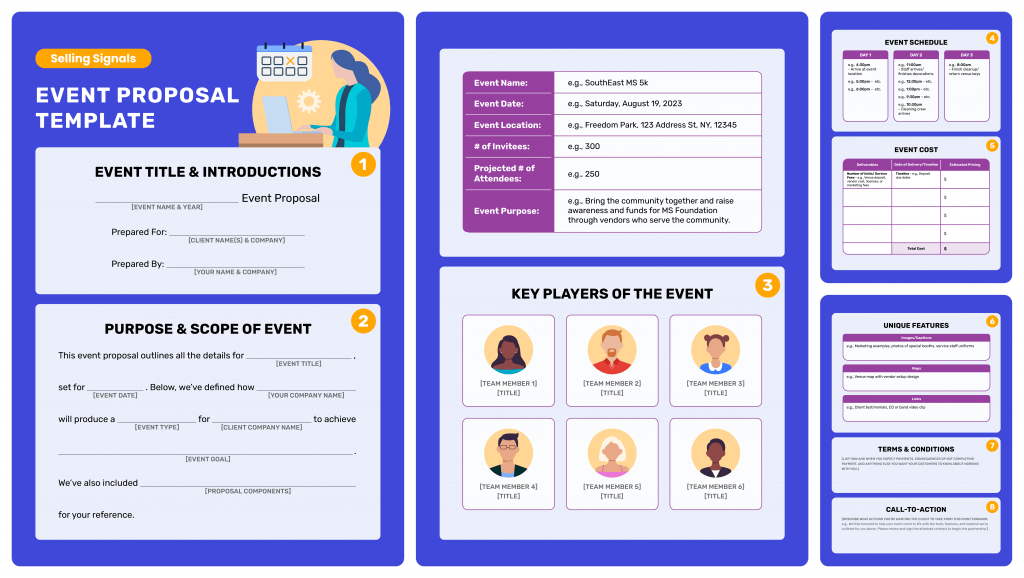
The length of the event proposal relies on how complex the proposal or event itself is. It can range from just a couple of pages to upwards of 10 pages. As long as you can effectively convey all the details, add or omit any of the components as you see fit. If you’re looking for a standard business proposal template instead, we have another ready-to-use template and guide available for you.
There are basic components that every effective event proposal possesses, some of which can be found in your standard business proposal as well. This includes a title and introduction, a complete list of the key players, event schedule and price, any unique features, terms and conditions, and finally, a call-to-action for the receiving client.
This is where you title your event proposal and address the recipients of it. A standard title format that’s easy to follow is to name the event, add the year or specific date, and add “Event Proposal.” Then name and address the key decision maker you're pitching this proposal to. If there are multiple, add all the appropriate names. Finally, include your name as the person who prepared the proposal so they know to reference you as the main point-of-contact (POC).
These eight components work together to not only define all the event details and showcase you and your company’s expertise but also get your client excited for the event itself. The use of our event proposal template can help organize exactly what information you want to present to your customer.
Writing an event proposal requires thorough insight into who’ll receive the proposal as well as knowing what you can realistically pull off for a client. Once you’ve defined the scope of the event, start organizing details and following a template that includes unique features, terms, and a CTA. With an event proposal finalized, send or present the proposal and follow up accordingly. We’ve filled out our free template as a guide throughout the following steps.
Since you’re in the lead nurturing phase of your sales process, by the time you’re drafting an event proposal, you should have already qualified the lead(s). This means you know exactly who the key decision makers are, what kind of event they’re interested in hiring help for, and if they prioritize price, location, scale, or aesthetic. Using this information, write the title and introduction of your event proposal, by naming the event and those decision makers.
An example title and introduction section can look like this:

In this example, the event proposal is being made for an imaginary large nonprofit organization, SouthEast MS Foundation, by another faux company, Vibration Events. Daniel Taylor, our imaginary salesperson and proposal pitcher, has titled the proposal and specifically addressed the two decision makers from SouthEast MS Foundation.
Using all of the information you learned from the prospects during lead generation and so far during this nurturing stage, write out a summary of the event. This’ll be an opportunity to showcase that you’ve been actively listening to the prospect and are able to reiterate their purpose and mission of the event. The summary should name your business, the prospects, the event name, and its goal.
Also start introducing some logistics that help describe the scope of the event. This includes the address of the venue or venue options, the projected attendee number, and target event date. You want the recipient to be able to understand the big picture of the event at a glance. List this information in a second summary paragraph, or in a table for better scannability.
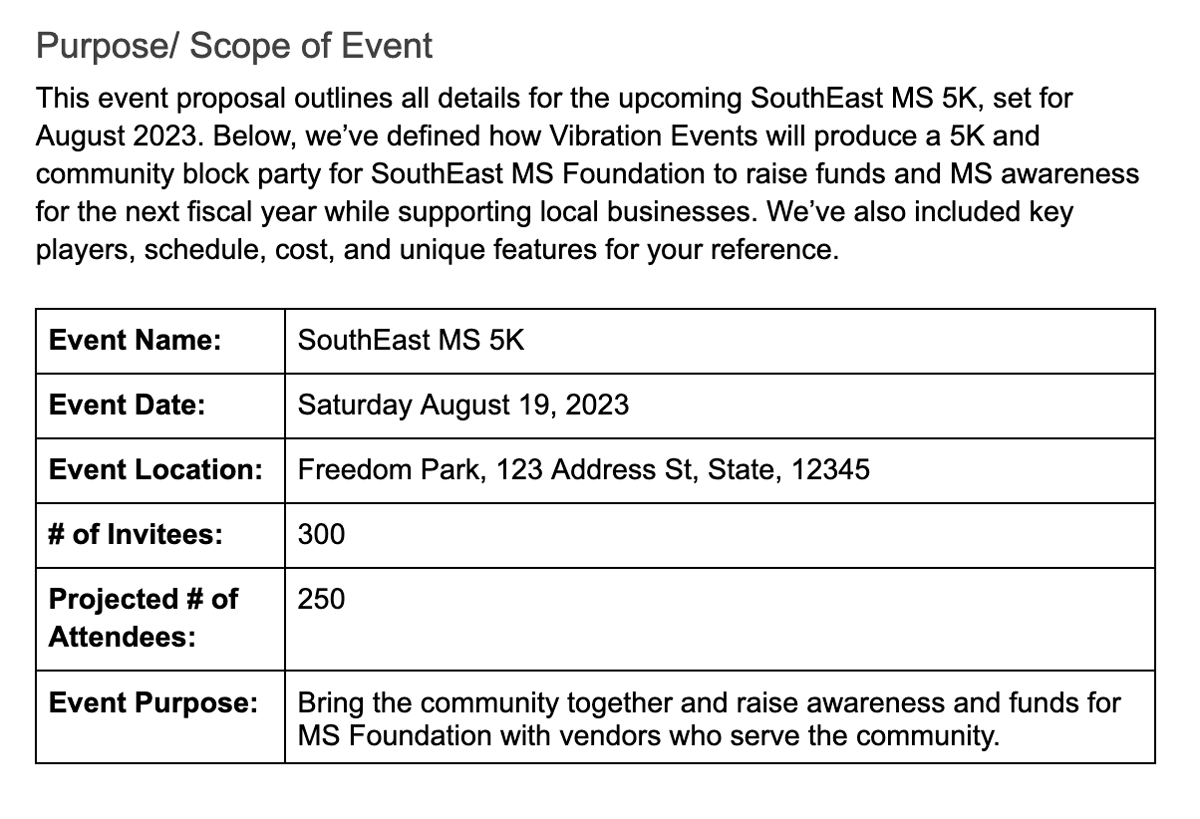
With the help of an event proposal template, you’ll know exactly what information that your prospect is interested in seeing before agreeing to hire your service. These standard components include a team overview, an event schedule, and an estimated cost quote. You can add more components as you deem fit. The degree to which you go into detail when filling out each component is also dependent on what you think your prospect cares about most.
Refer back to your own resources as well to start pulling contact information, quotes, and reservations from previous events you’ve managed. The team section might be one you can copy and paste from a previous proposal if you work with the same team for every event. The schedule can also be reused or altered. In the cost section, you’ll include your service or management fees.
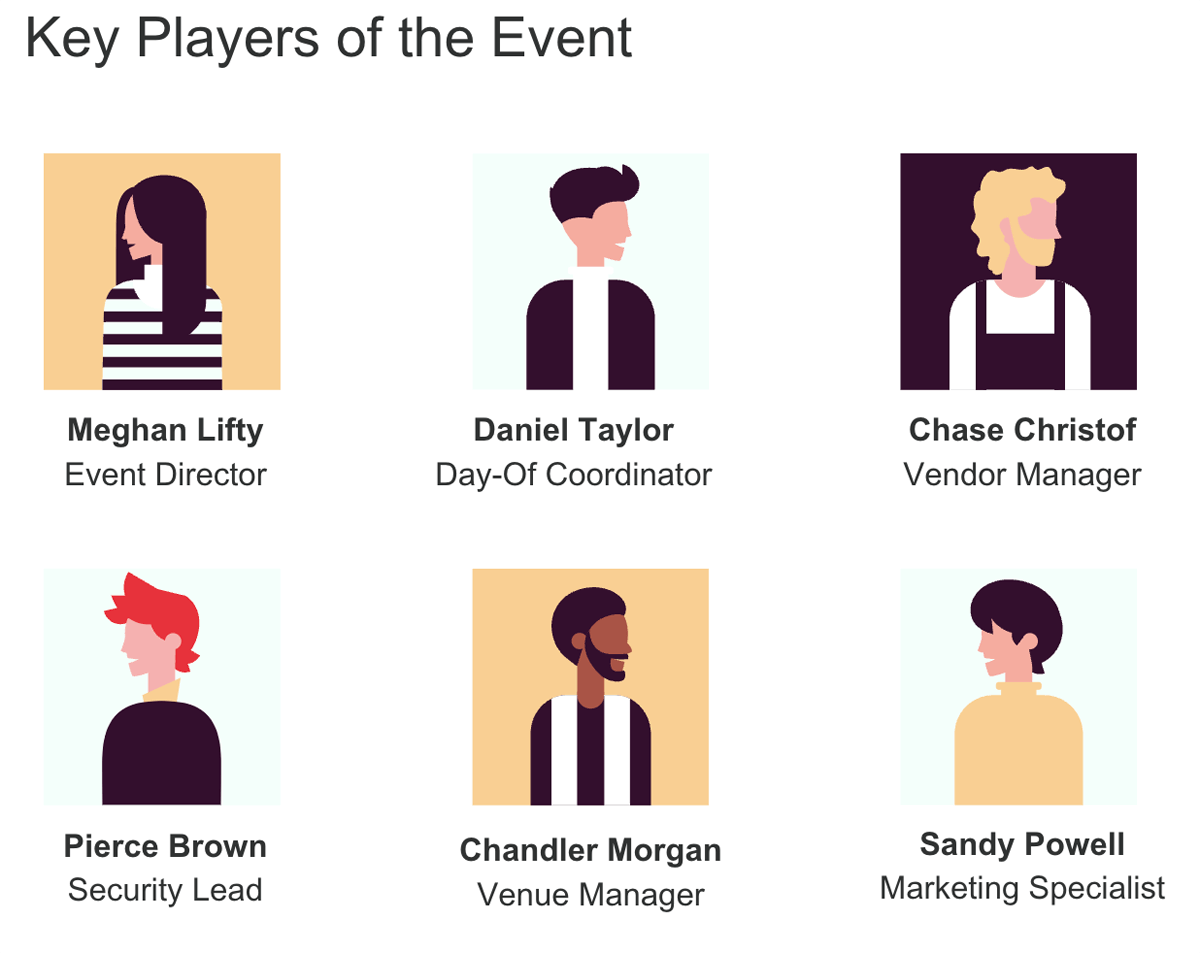
The key players you include are up to you and who you think the recipients will care to see in a proposal. Directors, coordinators, team leads, or onsite contacts are all to be considered to include. The best practice for writing the event schedule is the more detail, the better. This helps demonstrate to your recipients you’ve thought of everything down to the hour.
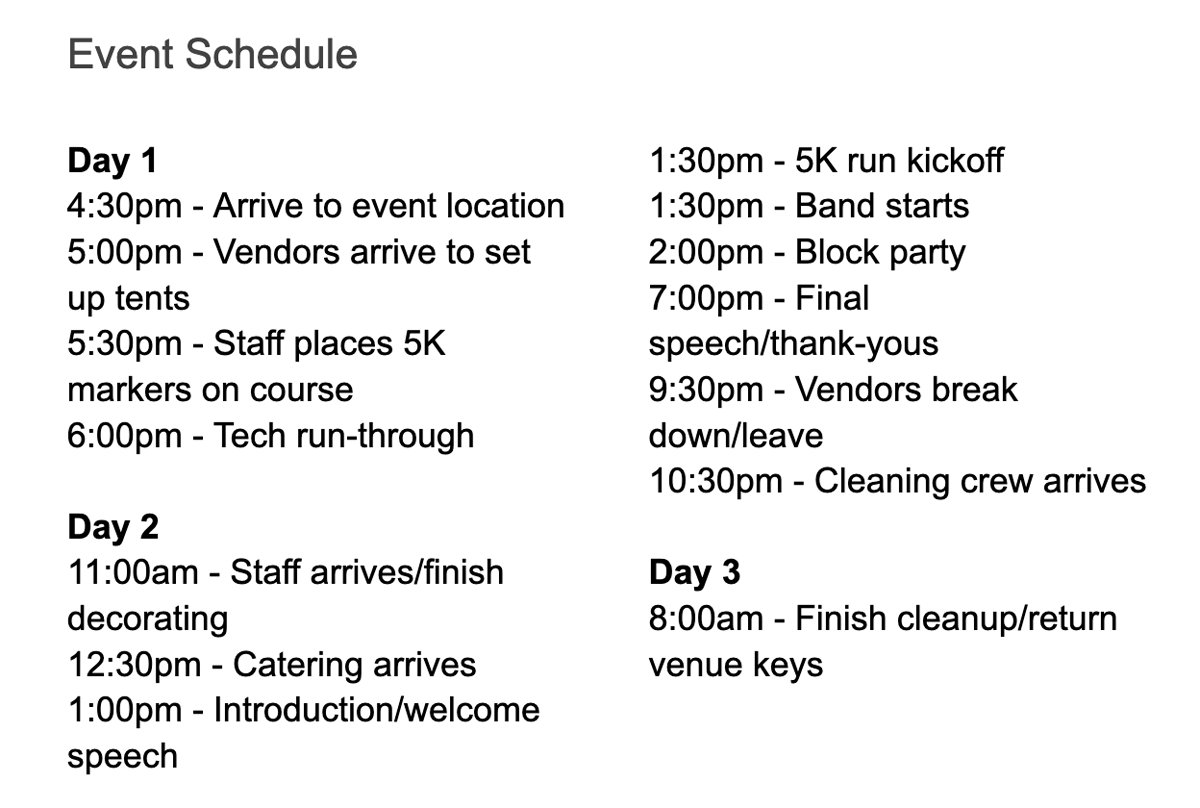
The purpose of an event proposal is to ultimately justify the cost of production to the scope of the event. Transparency with pricing is necessary because of this. When you can’t put an exact fee down, input an estimated cost, and just make sure the recipients are aware of it being subject to change.
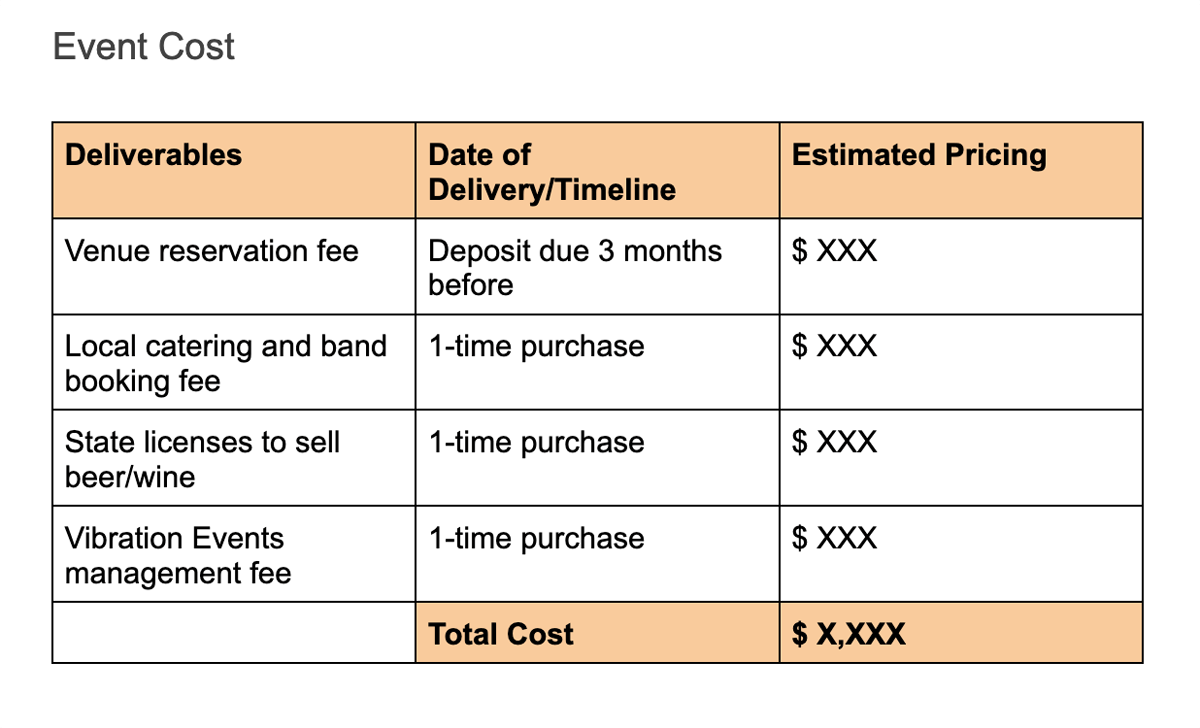
Similar to your business’s unique selling proposition (USP), you’ve got to tell the client what sets you apart from the competition. Consider any special services you offer, previous events you’ve held, or special resources you have. Include images, video links, testimonials or anything else to help your client visualize your capabilities.
In our ongoing example proposal for the SouthEast MS 5K, we selected two unique event features to use. Check out how we conveyed those unique features below:
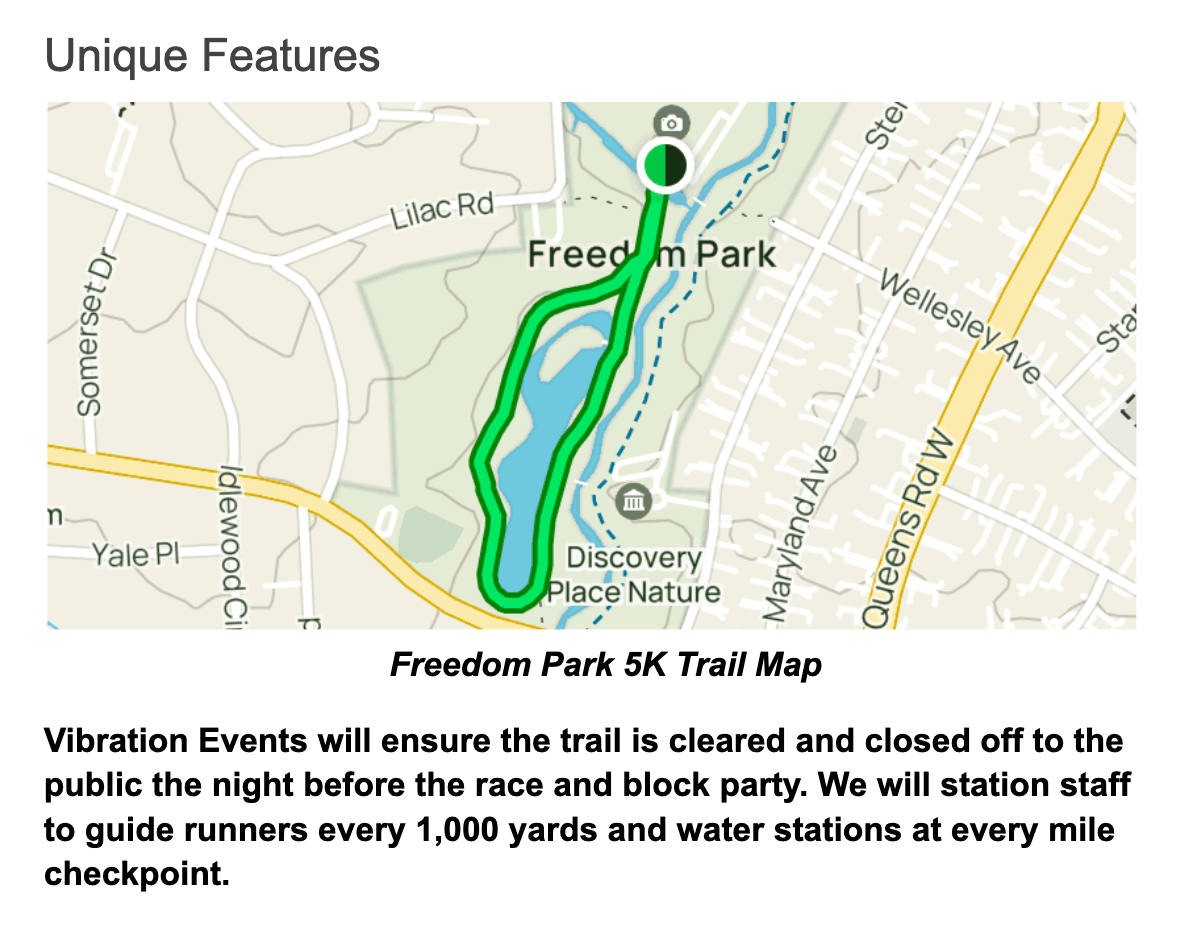
The proposing company will station staff members throughout the 5K trail, and they’ll also cover the entire marketing strategy for the race by designing, printing, and distributing all materials.
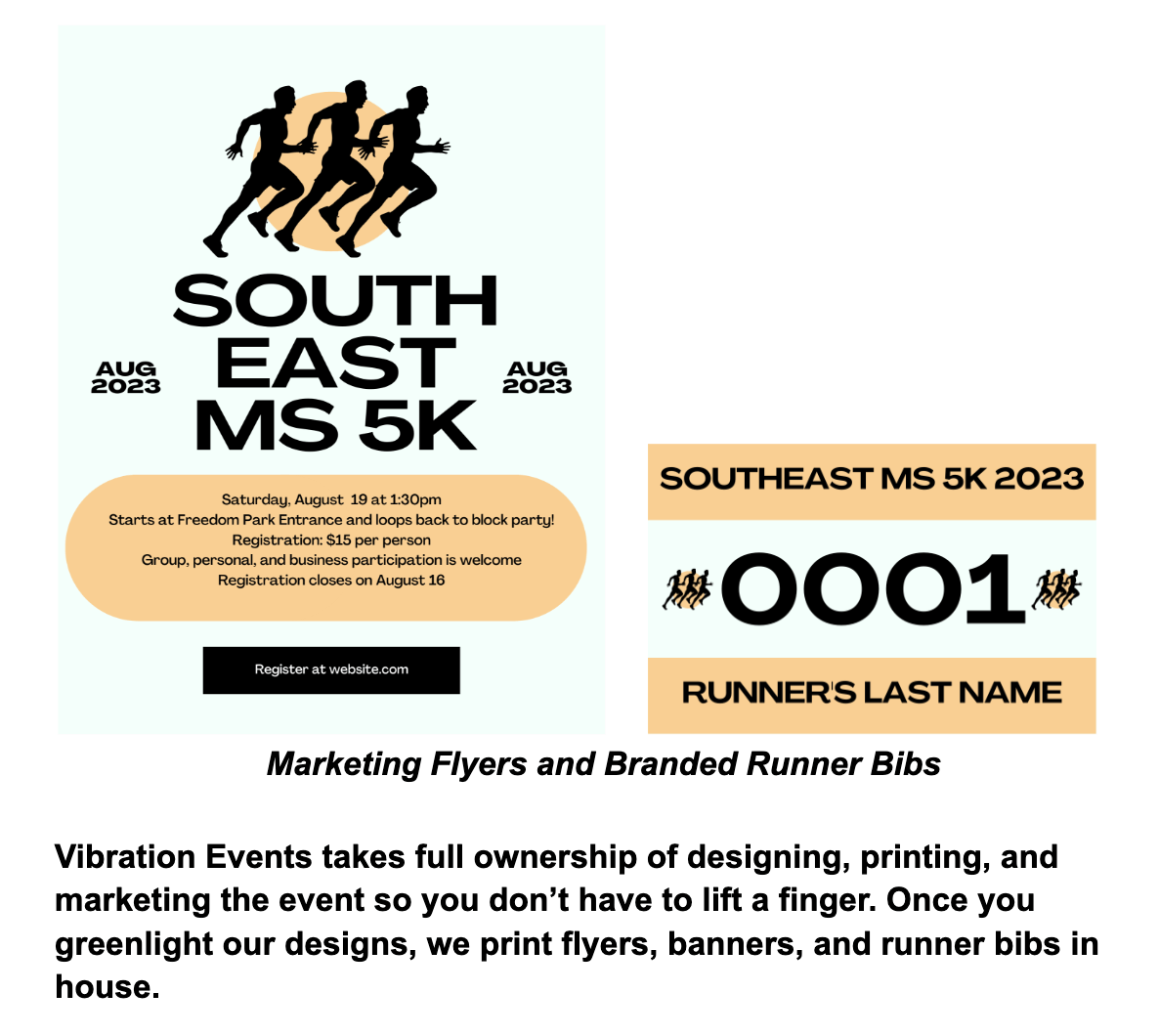
Next, explicitly mention your terms and conditions. These are the legal terms that your client must agree to when entering a business deal with you, including how and when you expect payment. It can also act as a disclaimer as well. You’ll also want to end your event proposal with a strong CTA for the recipient. Because you’ve put all this work into creating a proposal, you’re now asking them to follow through and sign the contract.
The terms and conditions and CTA for the SouthEast MS 5K mock event proposal are:
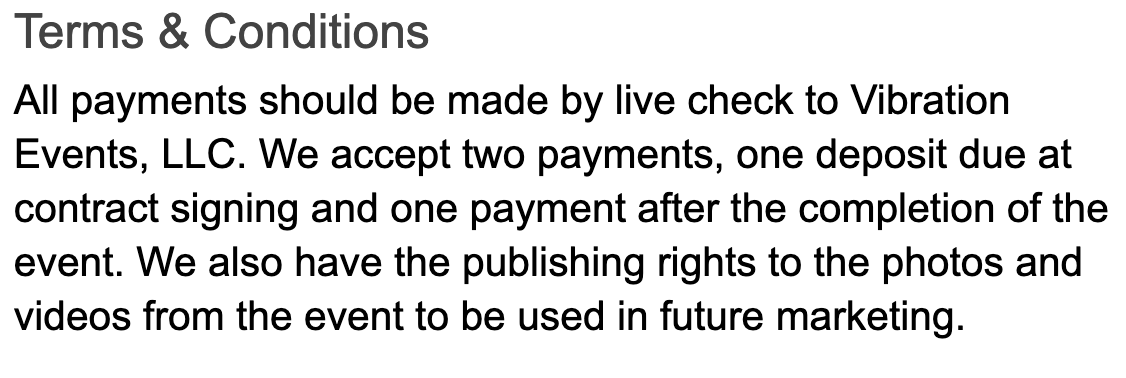
The length of your terms and conditions section is entirely dependent on your individual business practices. For the call-to-action, be direct and concise when describing what task you’re asking the lead to complete next.
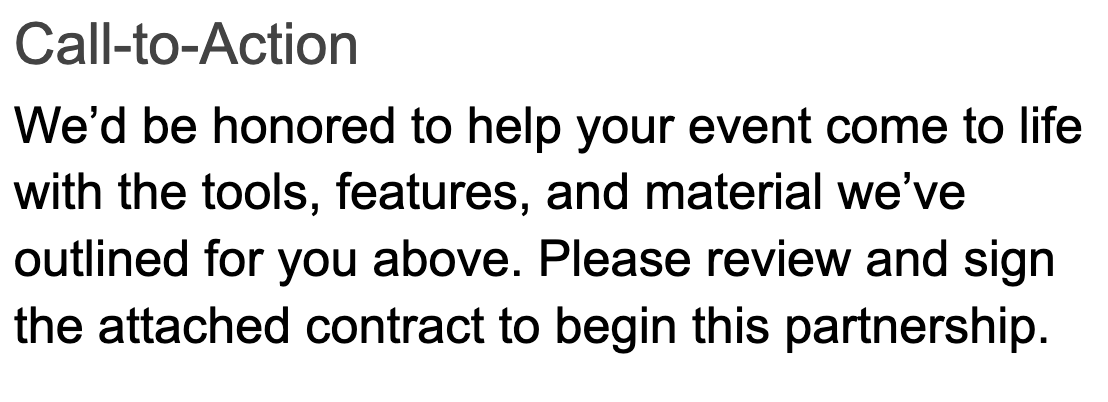
Once you’re satisfied with your complete event proposal, it’s time to present it to your clients. You can either send it electronically or present it over a meeting and then send it to the client to review themselves afterwards. Either way, use proposal software to track when you send the proposal, your clients' engagement with it, and when they return it to you. With this software, you’re able to see when exactly they open your proposal and accept binding e-signatures.
Since you included a strong CTA for the client asking them to take some kind of action, it’s best practice to give them a time window into when you expect them to respond or take that action. This can be as simple as writing in the email body “Take the weekend to look over this proposal, and let me know if you have any questions! Otherwise, I’ll follow up with you first thing Monday morning.”
Once your client has been given the opportunity to review the event proposal, you need to have a follow-up meeting. Ideally, the meeting should happen at most a week from when you submitted your proposal. This is where you open the floor to the recipients and answer any questions they may have.
In this follow-up meeting, prepare to handle objections, whether they have concerns about the price, priority, or timeline. Since your proposal can also act as a binding contract, don’t be thrown off if the client attempts to negotiate. Strategize accordingly for these conversations beforehand and remain cool in the meeting. Your goal here is to soothe the client’s hesitations and get them ready to sign the contract.
Following these seven steps will ensure you’re putting forward an event proposal that covers anything your client might want to know before entering a partnership with you. The more proposals you create, the more confident you’ll be in this process by learning your own tricks and tips.
There are best practices to keep in mind when creating an event proposal, whether you’re using a template or creating your proposal from scratch. You should always research the recipients in advance, be mindful of your product positioning, highlight your team, and if possible, present your proposal via an in-person or video meeting.
Similar to step one of creating your own event proposal, it’s important to know exactly who’ll be receiving the proposal. This means you must research them to understand their priorities. Look into their LinkedIn profile or read the bio on their company website. Use this information to choose what to include in your proposal, such as images, pricing justification, or detailed schedules.
The purpose of the event proposal is to convince your clients that your company can produce a unique event better than your competition. This means you’ll want your proposal to be consistent with your product positioning strategy. Use the same designs and language throughout your branding so your customer experience is consistent.
Include a section where you name each of your team members involved in the event. Consider even using their headshots, names, job titles, and maybe a fun fact. This will help the proposal feel personalized, and your clients will appreciate the specification.
Ideally, you’ll present your event proposal to your clients directly. This way, you’ll use your sales pitch techniques to answer questions immediately, handle objections, and end with a strong CTA. Otherwise, after sending your event proposal, schedule a follow-up meeting with your client to discuss all of the above.
Keeping these tips and tricks in mind when writing or presenting your event proposal will help you and your client both feel confident and excited about the event and partnership.
The use of a well-put-together event proposal can elevate your lead nurturing phase. The goal of an event proposal is to show off what your capabilities are while also giving the client all the information they’d want to make a purchasing decision with you. Both B2B and B2C sales processes can use this style of proposal, if it’s appropriate to the solution, usually a service, that you’re selling.
The most common event proposal use cases include:
Ultimately, an event proposal can be used as a versatile tool to pitch new events or to pitch your service to manage events already set in the future. Deciding to use an event proposal comes down to whether you’re proposing any events during your sales process, and to whom. Either way, a readily accessible event proposal template makes the creation of one as easy as filling in the blanks.
Event proposals outline the value you can bring to your clients and their events. Now that you know how to write a proposal for an event, what components make up an effective proposal, and its ideal use cases, you can use our template to start crafting your own. Whether you’re including a signature line or sending a separate contract along with the proposal, be prepared to field questions and handle objections to get the client ready to close the deal.
Allyssa is a sales writer with a background in B2B sales and account management. After earning her degree in English and communications, she spent her selling career supporting Fortune 1000 IT and finance companies including Bank of America, Wells Fargo, and Credit Karma. As a staff writer for Selling Signals, her specialties include lead nurturing, lead generation, and sales software topics. When she's not writing or updating articles, you can find Allyssa writing poetry, traveling, or picking up any new creative hobby.

Selling Signals delivers actionable advice for sales and marketing professionals. Learn strategies that help you hit targets, strengthen customer relationships, and win more business. Get expert advice on lead generation, sales processes, CRM software, sales management, and account management directly to your inbox.
Property of TechnologyAdvice. © 2025 TechnologyAdvice. All Rights Reserved
Advertiser Disclosure: Some of the products that appear on this site are from companies from which TechnologyAdvice receives compensation. This compensation may impact how and where products appear on this site including, for example, the order in which they appear. TechnologyAdvice does not include all companies or all types of products available in the marketplace.